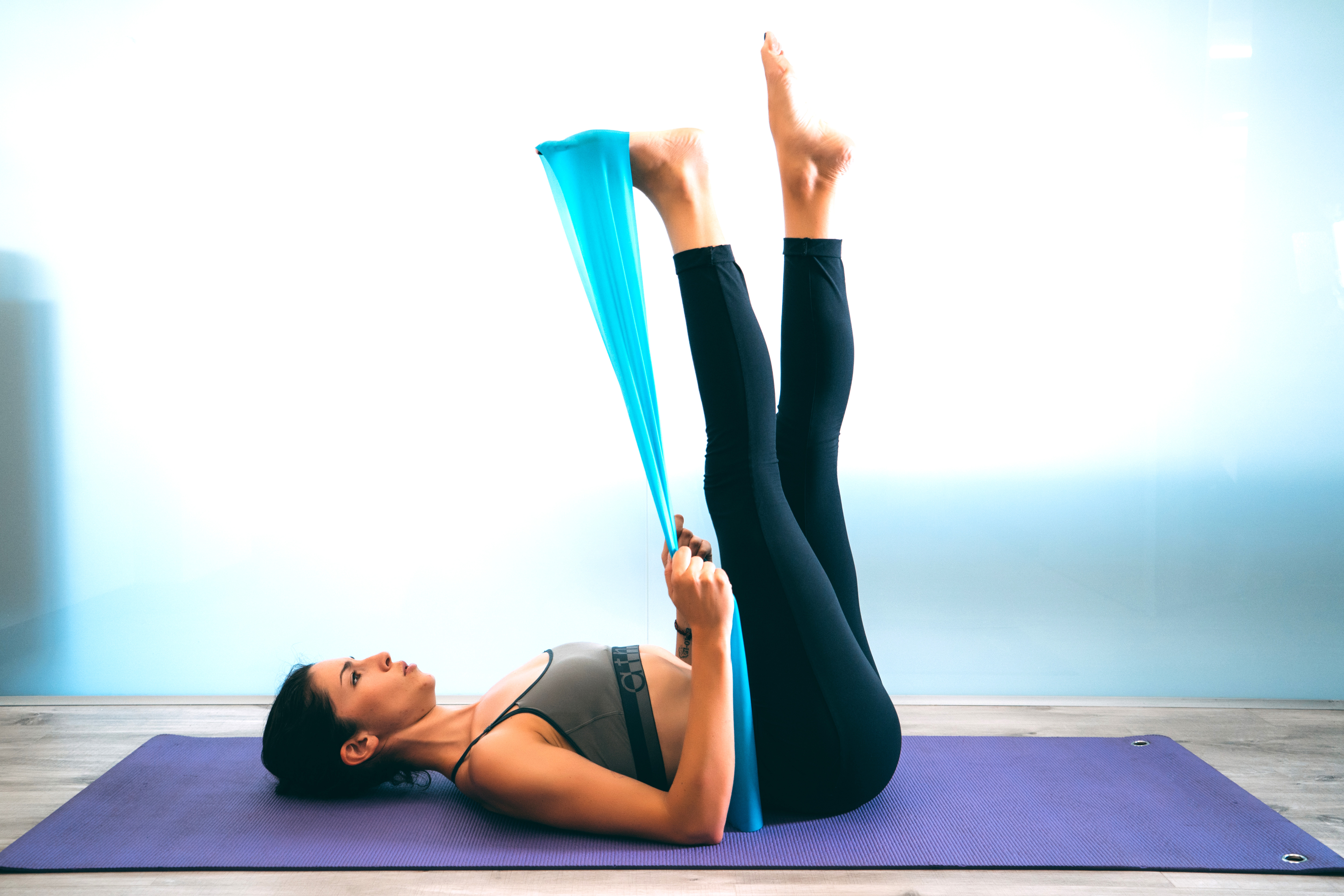

This bridge variation has you place a ball underfoot.

Start with 6 reps of each modification alternating on each side.Once mastered, try them all with both legs at the same time.Bent or straight leg inhale legs away from each other and exhale them back together.Extend one leg straight at a time-the lower you go, the harder it gets!.Exhale to lift your other leg without rocking or changing your pelvis.On your next exhale, once the air has left your belly, lift your right leg to a 90-degree angle tabletop feeling the initiation from the top of the inner thigh rather than the quad. Look for 90-degree hinges in your hip, knee, and ankle joints.On the exhale, feel a gentle lengthening of the entire spine while your deep core corsets your waist, lifting through the pelvic floor and keeping your spine stable and glutes relaxed.Breath into both your belly and the back of your ribcage, filling it with air and allowing it to expand on the inhale.Check in with your hands that the three points of your pelvis are parallel to the ground, and imagine you had your favorite beverage balanced on your pelvis you want to keep it steady and not spill your drink either between your legs or towards your stomach.Gently lift your hips to place the ball under your pelvis, keeping the back of your head and upper rib cage connected to the mat.Once you've mastered the basic version, try a variation. "Do only as many as you can, keeping the spine stable and deep abdominals engaged without letting your 'sit-up' muscle pouch out," says Gordon. This exercise targets the deep, supportive muscles of the core.
Pilates moves how to#
You can also use the ball to obtain deep, relaxing stretches for your muscles after a challenging workout.Ĭurious about how to incorporate a small Pilates ball into your favorite Pilates exercises? Ahead, Pilates instructor Tara Gordon shares 11 Pilates ball exercises to help build stability and strength through your whole body. Pilates is used to help improve balance, core stability, and even help you take some pressure off of your spine. The addition of a small Pilates ball adds interest and challenge to your everyday movements. And while Pilates can be practiced with or without equipment, you'll find that a good number of Pilates-based workouts tend to incorporate a small, squishy sphere known as a small Pilates ball. It's a low-impact workout format that requires a focus on breathing patterns and engaging stabilizer muscles that are often overlooked or underutilized in other types of training. Pilates is a powerful exercise modality that strengthens your deepest core muscles, helping to protect your spine and improve posture and daily functioning.


 0 kommentar(er)
0 kommentar(er)
